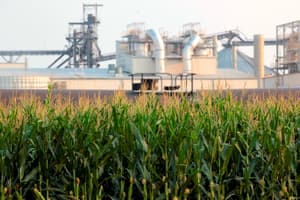Cities powered 100 percent (red), 70 percent (blue), and 50 percent (white) by renewable energy sources as of January 2018. CDP
More than 100 cities across the globe get at least 70 percent of their energy from renewable sources, roughly double the number in 2015, according to new research by the environmental data group CDP.
The analysis examines energy use data submitted to the CDP from 570 cities on six continents. Forty-three cities, from Reykjavik, Iceland to Addis Ababa, Ethiopia, are currently powered 100 percent by renewable energy, including hydropower, geothermal, solar, or wind. Brazil, with its extensive dam system, has more than 40 cities on the list, nearly half of which are 100 percent powered by hydro.
According to CDP, Burlington, Vermont is the only U.S. city powered entirely by renewables, using a combination of hydro, wind, solar, and biomass. (The Sierra Club, however, says that five U.S. cities have achieved this 100 percent goal, The Guardian reported.) Seattle is next, with renewables generating 94 percent of its electricity, followed by Eugene, Oregon at 89 percent and Aspen, Colorado at 74 percent.
CDP attributed the increase in cities’ renewable energy usage to both more municipalities sending data to the organization, as well as a global shift toward less carbon-intensive energy sources. “Cities are responsible for 70 percent of energy-related CO2 emissions,” Kyra Appleby, CDP’s director of cities, said in a statement. “Reassuringly, our data shows much commitment and ambition. Cities not only want to shift to renewable energy but, most importantly, they can.”
Appleby did, however, warn Bloomberg News that there is a danger in many cities’ overreliance on hydropower, such as in Brazil. “We’ve seen the production of electricity from hydropower drop drastically from one year to the next due to drought in some Latin American regions,” she said. “Cities in the developing world, especially in Latin America, are beginning to understand the need for diverse energy for truly sustainable power generation that truly considers the local environment and population.”



